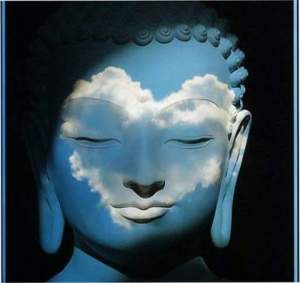 Form is emptiness; emptiness is form.
Form is emptiness; emptiness is form.
Emptiness is not other than form; form also is not other than emptiness.
Sensation, perception, volition, and consciousness are empty.
All phenomena are merely empty, having no characteristics.
They are not produced and do not cease.
They have no defilement and no separation from defilement.
They have no decrease and no increase.
In suchness there is no form, no sensation,
no perception, no volition, no consciousness.
There is no eye, no ear, no nose, no tongue, no body, no mind, no form,
no sound, no smell, no taste, no tactile sensation, and no phenomenon.
There are no sense consciousnesses, no mental consciousness,
no afflicted consciousness, and no ground consciousness.
There are no causal links of dependent origination
and no exhaustion of causal links of dependent origination.
There is no suffering, origin, cessation, or path;
no exalted wisdom, no attainment, and no non-attainment.
Because there is no striving for attainment,
all Bodhisattvas rely on and abide in the perfection of wisdom;
their minds have no obstructions and no fear.
Passing utterly beyond deception, the great beings on the path to perfection attain the final state beyond sorrow.
All the Buddhas who perfectly reside in the three times,
relying upon the perfection of wisdom,
become manifest and complete Buddhas
in the state of unsurpassed, perfect, and complete enlightenment.
–Sutra of the Perfection of Wisdom
 Revering and trusting in the Buddha, we will wear the armor of patient endurance.
Revering and trusting in the Buddha, we will wear the armor of patient endurance.









Recent Comments